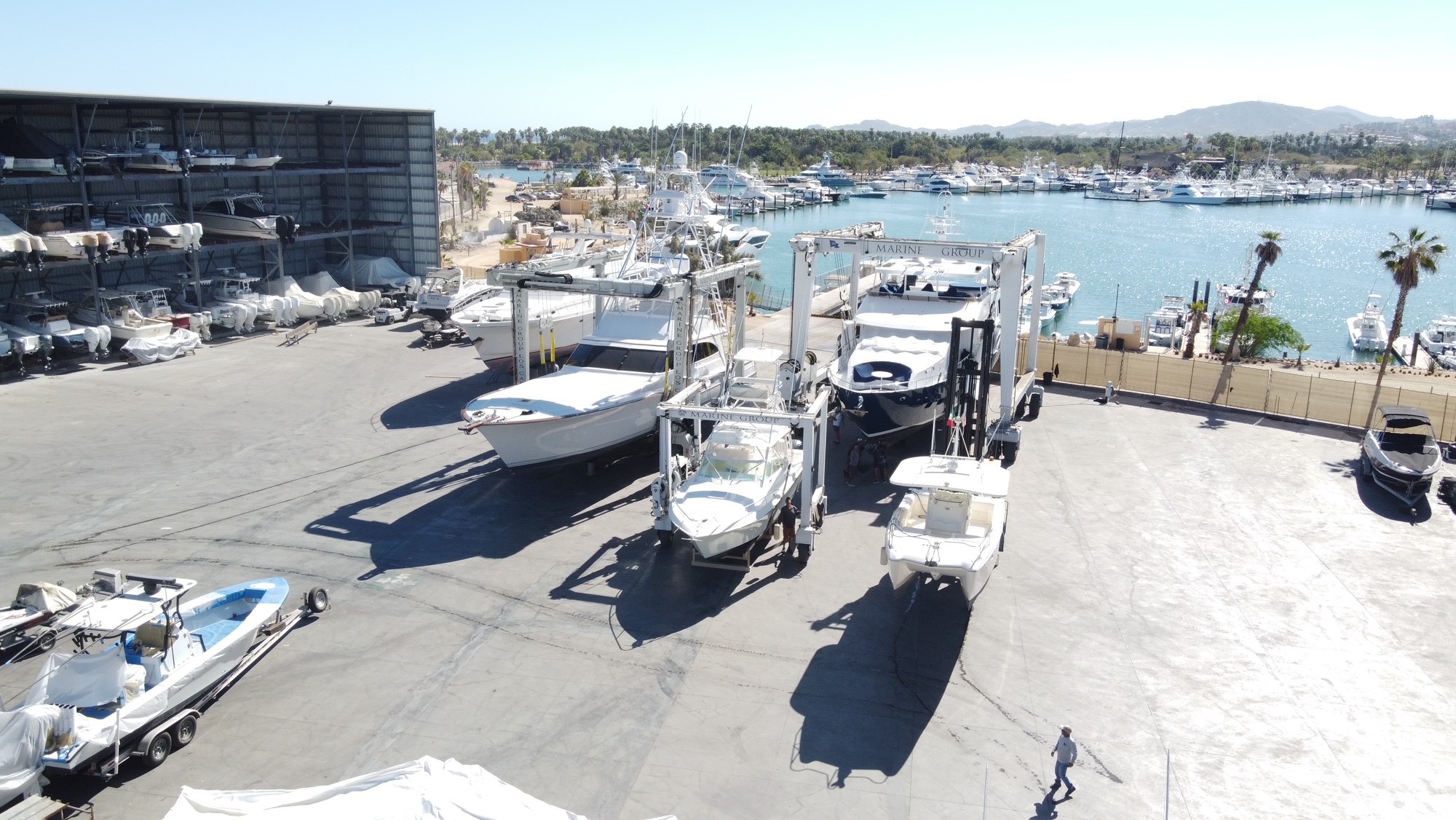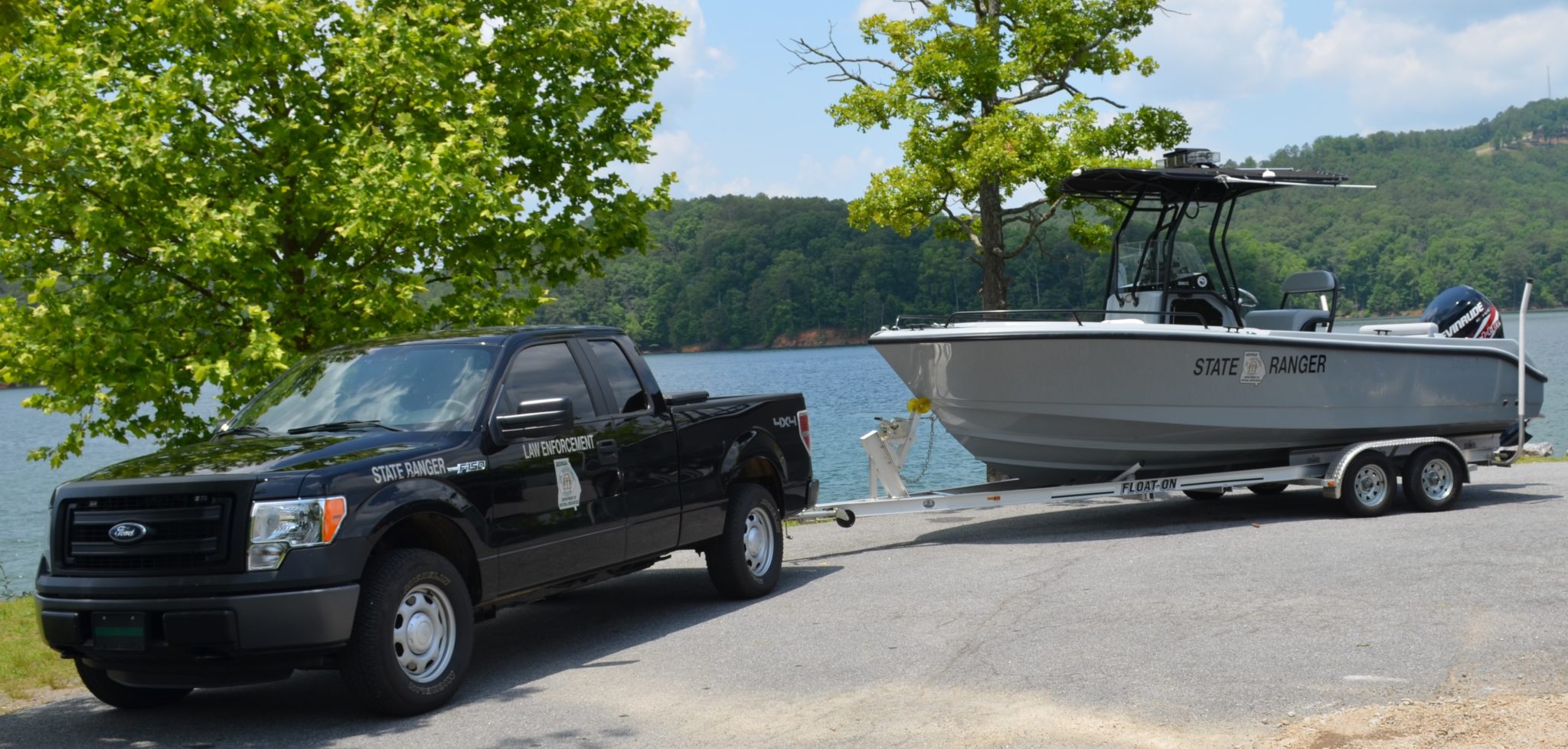Boat Storage Ultimate Guide: All You Need to Know in 2023
Boat storage is an essential aspect of boat ownership, ensuring that your prized vessel remains safe, secure, and well-maintained when not in use. With various options available to suit different types of boats and individual preferences, finding the right storage solution can make a significant difference in the long-term health of your boat, as well as providing peace of mind. This ultimate guide to boat storage will provide useful insights and tips to help you choose the best storage option for your needs.
Factors such as the size and type of your boat, the climate and geographical location, and your budget all play a role in determining the ideal storage solution. Additionally, preparing your boat for storage, protecting it during storage, and considering additional security measures are crucial steps in ensuring its longevity and preventing costly damage. Joining a boating community and partnering with marinas can also provide valuable information on best practices and local storage options.
Key Takeaways
- Different boat storage options are available, and factors like boat type, location, and budget should be considered when choosing one
- Properly preparing and protecting your boat during storage ensures long-term health and prevents costly damage
- Additional security measures and engaging with the boating community can offer further peace of mind and useful information.

Boat Storage Options
Outdoor Storage
Outdoor storage is a popular and cost-effective option for boat owners. In this type of storage, boats are stored outside in open spaces or on trailers. Outdoor boat storage typically offers limited protection against weather elements and security. However, it allows easy access to the boat for maintenance and repairs.
Some outdoor storage solutions include storing your boat in your backyard, a vacant lot, or a dedicated outdoor storage facility. Make sure to invest in a quality boat cover to protect your vessel from UV damage, dirt, and water.
Indoor Storage
Indoor storage provides better protection from the elements, as boats are stored in an enclosed space such as a garage, barn, or warehouse. Indoor boat storage significantly reduces the chances of damage from extreme weather, and usually offers enhanced security features. However, it can be more expensive than outdoor storage options.
When choosing an indoor storage solution, consider factors such as ventilation, accessibility, and the dimensions of your boat. Your boat should fit comfortably inside the storage space without any obstructions.

Marina Storage
Marina storage, or wet slip storage, is a convenient option for boat owners who frequently use their vessels. With this type of storage, a boat is moored in a slip at a marina or yacht club, allowing for easy access and egress. Some marinas offer additional services, such as fueling, repairs, and maintenance.
Marina storage can be more expensive than other options, particularly in busy waterfront areas. Research marina storage fees in your area and ensure that your chosen marina meets your needs in terms of location and amenities.

Self-Storage Facilities
Self-storage facilities offer a safe and secure location to store boats during the offseason or when not in use. These facilities may have both covered and uncovered storage options, with various unit sizes available to accommodate different boat dimensions. Self-storage facilities often provide gated access, security cameras, and 24/7 monitoring, making them a secure option for boat storage.
Before renting a unit, measure your boat carefully to determine the appropriate size of your storage space and check the facility's rules for storing boats.

Covered and Uncovered Storage
Covered storage refers to boat storage that offers protection from weather, such as an enclosed building or a covered area within a storage facility or marina. Uncovered storage, on the other hand, refers to boat storage options that do not provide any weather protection. Covered storage tends to be more expensive than uncovered storage, but it may offer more comprehensive protection for your boat.
When deciding between covered and uncovered storage, factor in your region's climate, the value of your boat, and the level of protection you are comfortable with.

Factors to Consider When Choosing Boat Storage
When looking for the perfect boat storage facility, several factors should be taken into account to ensure you're making the best decision. In this ultimate guide, we will cover key aspects you need to consider, such as the cost of boat storage, availability and access, security measures, and amenities offered by the facility.
Cost of Boat Storage
One of the primary factors to consider when choosing boat storage is the cost. Storage facilities charge varying fees depending on factors such as the size of the boat, length of storage, and additional amenities. In order to stay within your budget, it's essential to compare the pricing among different facilities.
- Size of the boat: Bigger boats often require more space and consequently have higher storage costs.
- Length of storage: The duration of your stay will impact the overall cost of boat storage. Some facilities may offer discounts for long-term storage or seasonal rates.

Availability and Access
When selecting a storage facility, it's important to ensure that it offers availability and access that suit your needs. Some factors to consider include:
- Operating hours: Verify the operating hours of the facility, considering if these are convenient for your needs, especially regarding boat pick-up and drop-off times.
- Accessibility: Determine whether the facility offers easy access for loading and unloading your boat. Keep in mind that you might need to coordinate with other boaters when sharing a communal storage space.
Security Measures
Security should be a top priority when choosing a boat storage facility. You will want to ensure your boat is protected from theft, vandalism, and other potential risks. Some essential security measures to look for include:
- Surveillance cameras: Make sure the facility is equipped with video surveillance to monitor and record activities within the storage area.
- Fencing and gating: A well-maintained fence and controlled access point can significantly enhance the overall security of the facility.
Amenities
Finally, it's essential to consider the amenities offered by the boat storage facility to ensure you choose a place that meets your requirements. Some of the amenities you might want to look for are:
- Marine supplies: A facility offering marine supplies such as fuel, ice, and boat maintenance equipment can be very convenient.
- Boat services: Some facilities may offer additional services like cleaning, maintenance, and repair, which can save you valuable time and effort.
In conclusion, considering these factors will help you choose the most suitable boat storage facility that meets the size, cost, security, access, and amenity requirements for your boat. By doing thorough research and comparing multiple options, you can make an informed decision and have peace of mind knowing your boat is well taken care of.

Protecting Your Boat While in Storage
Boat Covers and Tarps
Using a high-quality boat cover is essential to protect your vessel from potential damage. Boat covers shield your boat from harmful UV rays, which can cause the color to fade and materials to weaken. Additionally, they protect against dust, mold, and mildew, as well as condensation buildup from temperature fluctuations. Properly fitting covers and tarps must be used to ensure that they fit securely around the hull, preventing the entry of moisture and debris, and reducing the risk of corrosion and rust. It's crucial to choose a cover that is both water-resistant and breathable to prevent trapping of moisture inside.
Engine and Battery Maintenance
While your boat is in storage, it's important to care for its engine and battery to ensure trouble-free performance when you're back in the water. To minimize the risks of corrosion and rust, make sure to flush the engine with freshwater and treat it with a corrosion inhibitor. Store the battery in a cool, dry place, and keep it charged by using a battery maintainer to avoid permanent damage from deep discharging. Additionally, it's essential to inspect the fuel system for leaks, clean the carburetor, and ensure the fuel stabilizer is added correctly to prevent damage to your engine during storage.
Interior and Exterior Protection
Protecting the interior and exterior of your boat during storage is crucial. Start by cleaning the boat thoroughly both inside and out before storing it, removing any saltwater residue, dirt, or grime. This helps prevent mold, mildew, and unpleasant odors that can develop during storage.
For the interior of your boat, place moisture absorbers such as silica gel packs or commercial desiccant to combat condensation. Ensure all hatches, doors, and windows are sealed tight to prevent pests and rodents from causing damage to upholstery and other materials.
For the exterior of the boat, applying a layer of wax on fiberglass surfaces can provide additional protection against sun damage and make it easier to clean once removed from storage. Regularly inspecting and servicing the boat's exterior, including critical components like the hull, propeller, and rudder, will help detect any issues that may arise during storage, minimizing potential problems when back in the water.
By following these guidelines for boat covers and tarps, engine and battery maintenance, and interior and exterior protection, you can ensure your boat stays in excellent condition while in storage, and enjoy its optimal performance once you're ready to hit the water again.

Preparing Your Boat for Storage
Winterization Process
Winterizing your boat is a crucial step in preparing it for storage. The winterization process helps protect the boat's engine, plumbing, and other systems from damage due to freezing temperatures. To begin, drain all water from the boat, including the bilge, water tanks, and plumbing systems. Then, add antifreeze to prevent any remaining water from freezing and causing damage. It's essential to check the owner's manual for specific winterization instructions, as different boats may require unique steps. For the best results, consider hiring a professional maintenance service to perform the winterization process, as they have the experience and knowledge to ensure your boat is adequately prepared for storage.
Boat Lifts
Boat lifts are a useful storage solution, as they can elevate your boat out of the water to prevent damage from ice and corrosion. A boat lift provides a safe and secure storage option, minimizing the risk of your boat sinking or becoming damaged due to harsh winter conditions. It's important to choose the proper boat lift for your vessel, as various types and sizes are available on the market. Ensure that the boat lift supports the weight and size of your boat, and consult with a professional if unsure of which lift to purchase.
Storage Racks
Utilizing storage racks can be an efficient and space-saving way to store your boat during the off-season. These racks are often made of metal, with multiple levels to accommodate several boats. Storage racks provide a dry and secure environment for your boat, protecting it from snow, ice, and other harsh weather conditions. When using a storage rack, be sure to properly secure your boat, covering it with a fitted cover to prevent exposure to dirt, debris, and moisture.
Preparing your boat for storage is essential to maintain its performance and longevity. By focusing on proper winterization, utilizing boat lifts, and considering storage racks, you can ensure that your boat is ready to hit the water when spring arrives.

Additional Security Measures
Security Cameras and Surveillance
Investing in a good security camera system is vital for any boat storage facility. Security cameras not only deter potential thieves, but also provide peace of mind for boat owners. Opt for 24-hour surveillance cameras that monitor all areas of the storage facility, with high-resolution footage to ensure clear images if an incident occurs. Furthermore, consider installing motion-activated cameras and adequate lighting around the facility to enhance visibility during nighttime hours.
Gates and Access Control
Gates and access control measures offer another layer of protection for boat storage facilities. Secure, well-maintained gates should enclose the entire facility to limit unauthorized access. Access control systems, such as electronic key fobs or code-controlled gate access, help track who enters and exits the storage area. Adhering to a strict access control protocol has the benefit of keeping out unwanted visitors and maintaining a secure environment for boat storage.
Insurance and Liability Protection
Having the right insurance policy is crucial when it comes to boat storage security measures. Boat owners should have an insurance policy that covers their boats during storage, including protection against theft, vandalism, and natural disasters. Furthermore, storage facilities should hold their own liability insurance to protect themselves in case of any accidents or incidents on their premises.
To summarize, taking additional security measures in boat storage facilities, such as security cameras and surveillance, gates and access control, and insurance and liability protection, will provide boat owners with peace of mind and ensure a safe and secure environment for their valued vessels.

Boating Community and Marinas
Marinas play a crucial role in the boating community as they provide a range of facilities and services to boaters. These amenities include boat storage, launch ramps, fuel docks, and even recreational facilities such as showers and clubhouses. The marina environment fosters a sense of community and camaraderie among boaters, making it an essential component of the boating experience.
One primary service offered by marinas is boat storage. Depending on the marina, storage options may range from open or enclosed dry-land boat storage to in-water slips. In addition to storage, marinas often have boat lifts available to provide easy access for maintenance, cleaning, and other boat care tasks. Boat lifts can also prevent the build-up of fouling communities, which can have a negative impact on both boat performance and the environment.
Marinas typically cater to a diverse range of boaters, including recreational boaters, sport fishers, and sailors. This diversity is often reflected in the mix of boat types and sizes stored at a marina, as well as the various boating activities that take place there. Some marinas may even specialize in certain types of boats or boating activities, catering specifically to a particular segment of the boating community.
In addition to the infrastructure and services provided, marinas can also be a valuable source of information and support for the boating community. Boaters can tap into the wealth of experience and knowledge held by marina staff and other boaters, receiving advice on local boating conditions, maintenance tips, and other aspects of boating. Marina staff may also organize events and activities aimed at bringing the community closer together, such as regattas, seminars, and social events.
Overall, marinas are essential for supporting the boating community, providing both the necessary infrastructure and access to information and resources. Whether it's a seasoned boating enthusiast or a beginner learning the ropes, marinas play a vital role in fostering community connections and enabling a seamless, enjoyable boating experience.

Frequently Asked Questions
What are the best practices for storing a boat long-term?
To ensure the longevity and safety of a boat during long-term storage, it's crucial to follow some best practices. These include cleaning the boat thoroughly, protecting it from the elements, and performing necessary maintenance tasks. Properly securing the boat, such as using trailering ties or stands, is also essential for preventing damage during storage.
How can I protect my boat during offseason storage?
Protecting your boat during the offseason involves taking steps to prevent damage from the elements and maintaining the boat's components. Cover the boat with a high-quality, breathable cover to keep out moisture and debris. Additionally, consider using ventilation or dehumidifying systems to control humidity and prevent mold and mildew growth.
What are key maintenance tasks before storing a boat?
Prior to storage, perform essential maintenance tasks to ensure your boat's longevity. These tasks may include changing the oil and filter, draining the fuel system, flushing the cooling system, and applying a protective coating to metal components to prevent corrosion. Inspect the boat for any necessary repairs and attend to them before storage.
Should I use indoor or outdoor storage for my boat?
The choice between indoor and outdoor storage depends on factors like the climate, security, and your budget. Indoor storage typically offers better protection from the elements and potential theft, but it can be more expensive than outdoor storage. Outdoor storage is generally more affordable but may require additional precautions to protect the boat from weather, debris, and theft.
What are the costs associated with different boat storage options?
The costs of boat storage can vary significantly depending on the type of storage chosen and the location. Indoor storage facilities, such as climate-controlled units or dry-stack storage, tend to be more expensive but provide better protection. Outdoor storage options, like marina slips or trailer storage in a yard, are usually more affordable but may require extra investment in protective measures.
How do I prepare my motor and electronics for boat storage?
Properly preparing your motor and electronics for storage ensures their functionality when the boating season resumes. For the motor, you should flush the cooling system, apply fogging oil to the cylinders, and stabilize the fuel. For the electronics, disconnect and remove any devices that may be at risk of damage from moisture or cold. Consider using moisture-absorbing packs or dehumidifiers in the storage area to protect sensitive components.
Charlie is Editor-in-Chief of Sea Magazine







